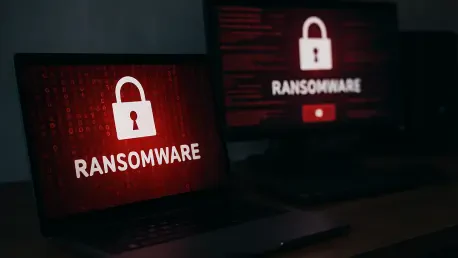Exposing a Critical Cyber Threat in Today’s Market
In an era where digital transformation drives business operations, a staggering statistic emerges from the cybersecurity landscape: nearly half of all ransomware attacks in the third quarter of this year exploited hijacked VPN credentials, pointing to a pervasive vulnerability in corporate defenses. As cybercriminals increasingly target remote access systems to infiltrate networks, the purpose of this market analysis is to dissect the trends fueling this surge in ransomware incidents, evaluate the implications for various industries, and forecast potential shifts in the cyber threat landscape. By delving into the data and attack vectors, this examination aims to equip stakeholders with actionable insights to navigate an environment where cybercrime is a multi-billion-dollar enterprise. The importance of understanding these patterns cannot be overstated, as businesses face mounting pressures to secure their digital assets against relentless adversaries.
Deep Dive into Ransomware Market Trends and Projections
Credential Exploitation: A Dominant Force in Cyber Attacks
The ransomware market has witnessed a sharp uptick in attacks initiated through compromised VPN credentials, with 48% of incidents in the third quarter of this year stemming from this vector. This represents a notable increase from 38% in the previous quarter, signaling a growing reliance by attackers on stolen access points to penetrate corporate networks. Major ransomware groups, responsible for 65% of documented cases, have honed their strategies to exploit weak authentication protocols, particularly in systems lacking multi-factor authentication (MFA). Industries such as finance, healthcare, and manufacturing, which heavily depend on remote access for operational continuity, are particularly vulnerable. This trend underscores a critical gap in security practices, as human error and inadequate safeguards continue to provide easy entry for cybercriminals.
Underground Credential Markets: Fueling the Ransomware Economy
A parallel development in the ransomware ecosystem is the thriving underground market for stolen credentials, driven by infostealer malware. Despite international efforts to disrupt these operations, new variants of malicious tools have emerged, ensuring a constant supply of compromised data for sale. This commoditization lowers the barrier to entry for less-skilled attackers, amplifying the scale and frequency of ransomware campaigns. Businesses across sectors must recognize that credentials harvested from employees or third-party vendors can directly jeopardize their networks. The market dynamics suggest that without robust MFA and conditional access policies, organizations will remain prime targets for these illicit transactions, perpetuating a cycle of exploitation.
Zero-Day Vulnerabilities: An Escalating Risk Factor
Compounding the threat of credential theft is the rising prevalence of zero-day exploits, with advisories for these unpatched vulnerabilities surging by 38% in the third quarter. Analysis of recent data reveals over 11,000 new vulnerabilities documented, affecting widely used systems across multiple industries, including technology and critical infrastructure. These flaws often evade traditional security measures, as patches may not be immediately available, leaving systems exposed for extended periods. The market impact is profound, as small and medium-sized enterprises, often lacking dedicated cybersecurity teams, struggle to respond swiftly. This trend indicates a pressing need for continuous vulnerability management and a shift toward proactive rather than reactive security postures.
Future Outlook: Evolving Threats and Market Shifts
Looking ahead, the ransomware market is poised for further evolution, with projections indicating that attackers will refine their tactics around credential stuffing and infostealer distribution. The integration of advanced technologies, potentially including automation, could scale these attacks to unprecedented levels over the next two years, from this year to 2027. Simultaneously, the increasing complexity of software ecosystems suggests that zero-day exploits will remain a cornerstone of cybercriminal strategies, challenging organizations to keep pace with emerging vulnerabilities. Regulatory frameworks are also expected to tighten, pushing companies to adopt stricter compliance measures. Sectors with high remote work adoption, such as IT services and education, may face intensified risks unless they prioritize zero-trust architectures and real-time monitoring solutions.
Reflecting on the Ransomware Landscape and Strategic Next Steps
Looking back at the ransomware trends analyzed for this year, the findings paint a stark picture of a cyber threat environment dominated by exploited VPN credentials and zero-day vulnerabilities. The data revealed that 48% of attacks capitalized on stolen access, while a significant spike in unpatched system flaws compounded corporate risks across industries. These insights highlight the urgent gaps in authentication and vulnerability management that leave many organizations exposed. Moving forward, businesses must pivot toward a multi-layered defense strategy, integrating mandatory MFA, rigorous lockout policies, and advanced endpoint detection tools to disrupt attacker entry points. Additionally, fostering a culture of cyber resilience through regular training and simulations can address human vulnerabilities. As the market continues to grapple with adaptive cybercrime, investing in predictive threat intelligence offers a pathway to anticipate and mitigate risks before they materialize, ensuring a stronger stance against future challenges.









